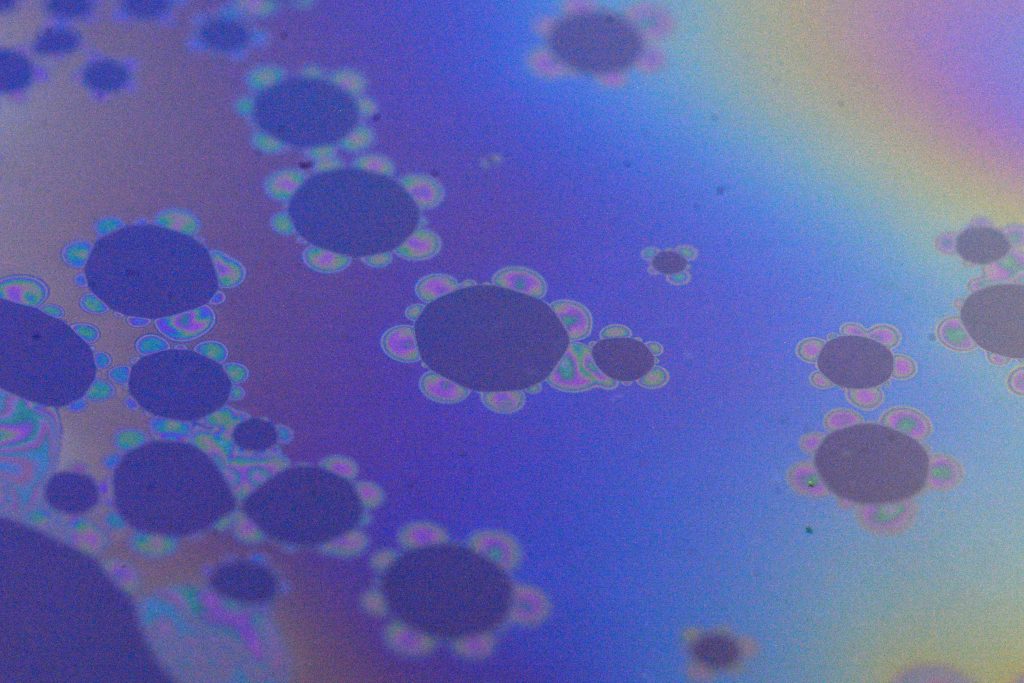Gallery
Collective oil-coated bubble bursting
Collective oil-coated bubble bursting tends to generate jet drops with smaller sizes, greater overall numbers of drops and higher droplet ejection heights than bare bubble bursting at either clean or surfactant-laden aqueous surfaces, as shown in the figure. The droplet size is one key parameter in predicting its residence time and transport, as small droplets are more easily lifted by turbulent eddies. These contaminant-laden drops smaller than 10 μm in diameter could pose a higher risk of pollutant spread or infection as they can penetrate farther into the respiratory tract than larger drops. The oil-coated bubbles in our experiments could typify the ubiquitous contaminated or compound bubbles in the oceans, and bubble-bursting jet drop particles have been found to contain different compositions with stronger ice nucleating abilities than film drop particles. Our discovery may therefore improve chemical transport modelling related to bubble-driven fluxes in the context of sea spray aerosols.
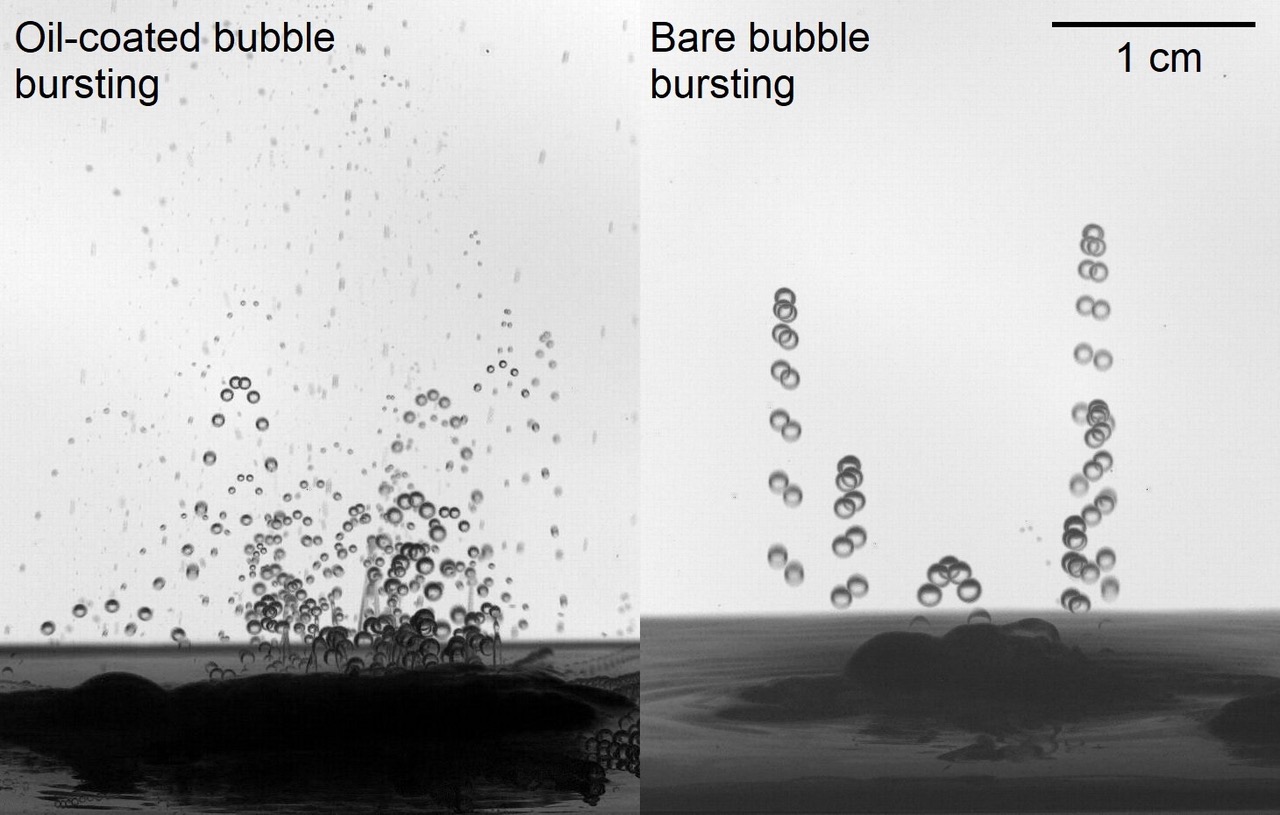
Bubble cap rupture
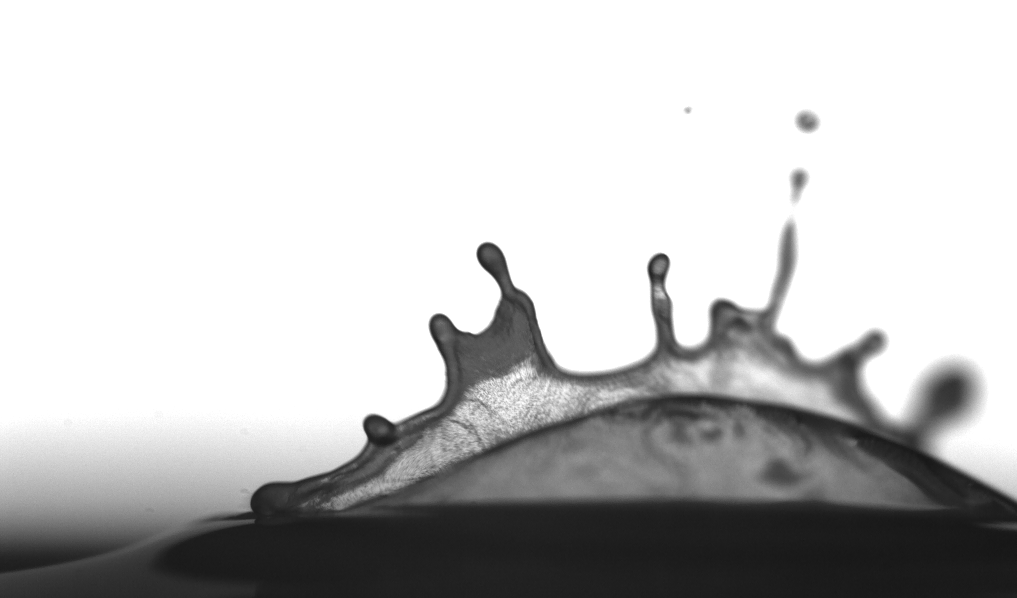
Bubble bursting jets at an oil-covered aqueous surface
Multi-vesicular Vesicles
Transformations
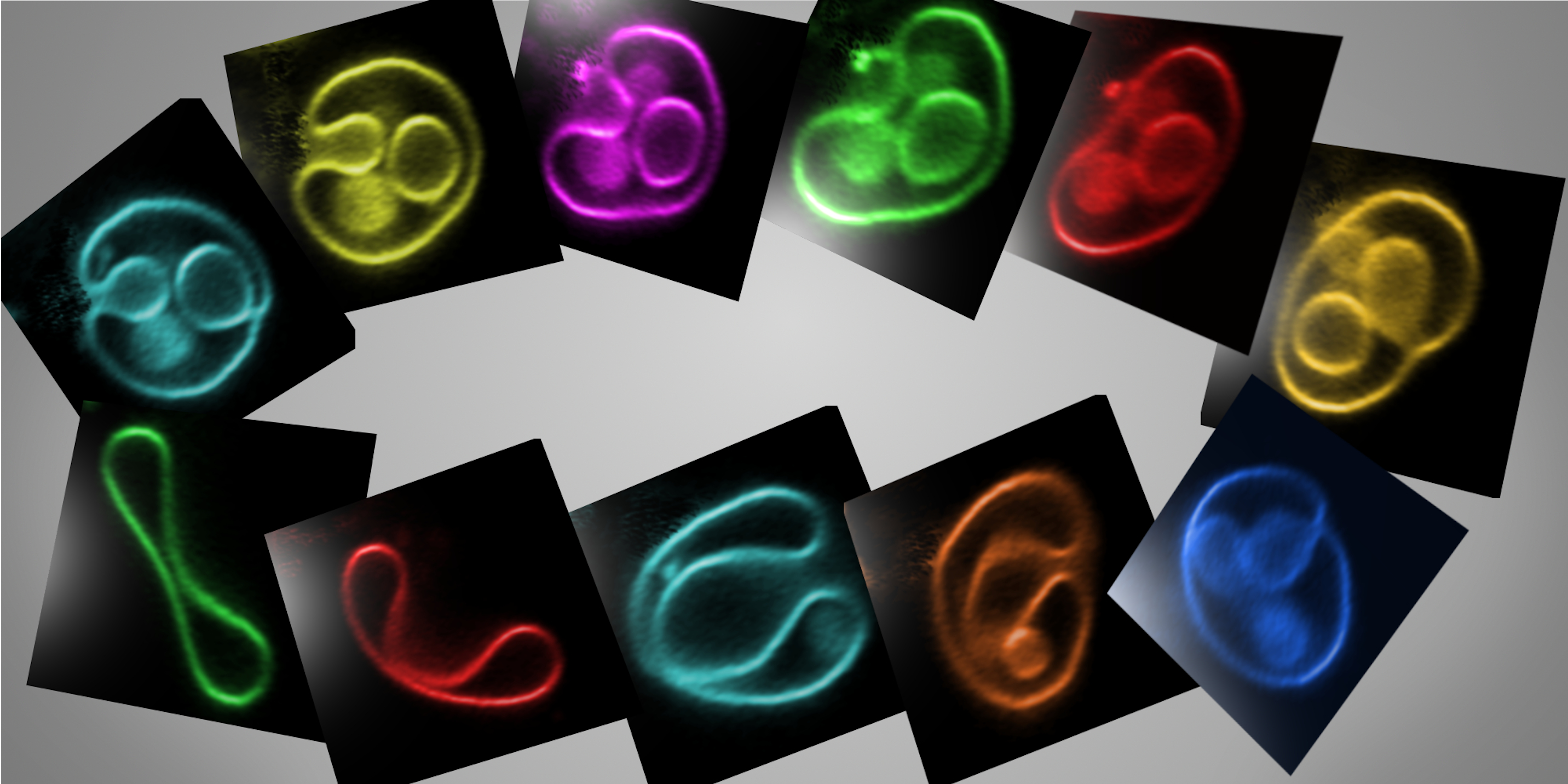
Nanoparticle Galaxy
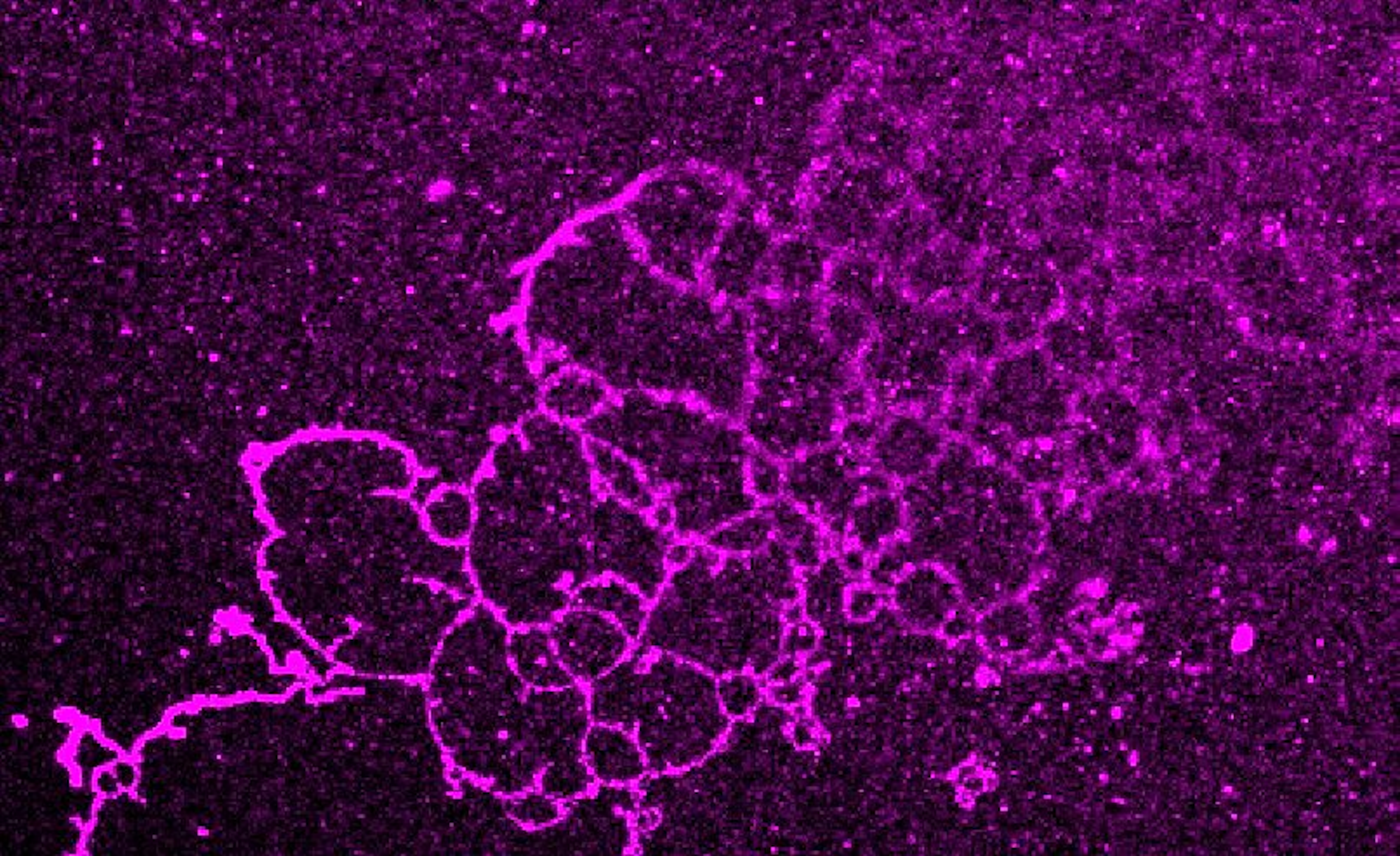
Blooming Flowers
